|
In 1926 much of the country’s industry was
brought to a standstill by the general strike, which lasted for
10 days, from the 3rd of May until the 13th of May. It was
called by the TUC in an unsuccessful attempt to protect coal
miner’s wages and working conditions.
Many companies were badly affected by the
strike, but luckily at Guy Motors only a few employees came out
on strike, due to the excellent industrial relations at the
factory.
After the strike, Sydney Guy formed a works
committee to liaise with employees and management in a case of
dispute. All employees had to sign a declaration stating that
they would follow a standard procedure, and would not undertake
any industrial action until the procedure had been completed.
They agreed to notify the works committee in writing, about any
dispute, and the works committee in turn, had to discuss the
matter with management, and reply in writing within 48 hours.
|
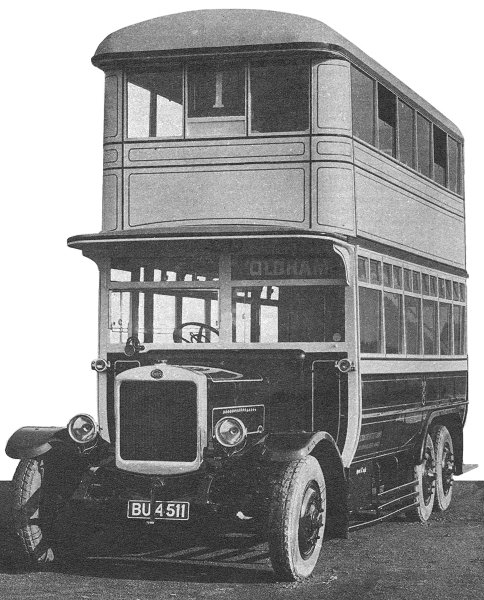
One of the three 6-wheeled Guy D.D.
chassis with a Roe body that was purchased by Oldham
Corporation in 1926. |
| If the reply was unsatisfactory, the works committee
could then refer the matter to the relevant trade union
representative, who could communicate with the managing
director. The system worked extremely well, and Guys
remained strike free. |
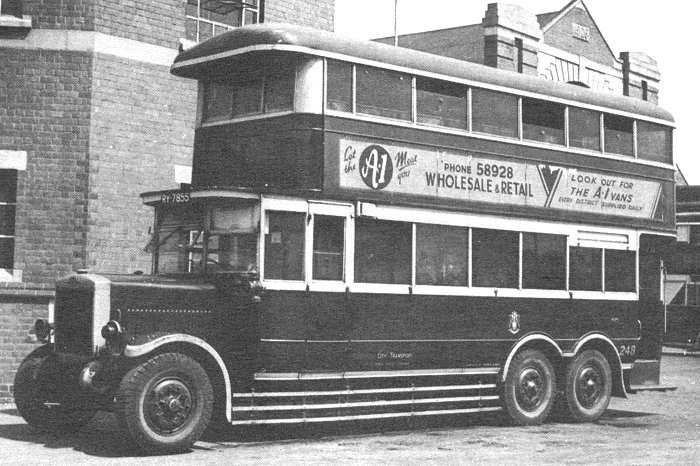
A Guy CX 6-wheeled bus from 1929 operating in
Leicester during W.W.2.
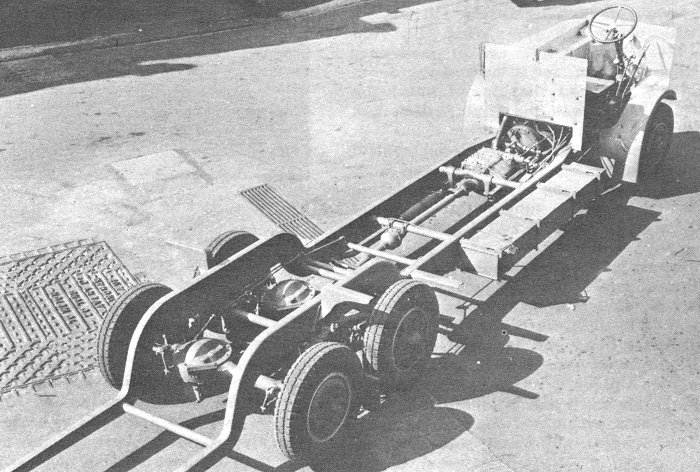
A 1929 Guy FCX bus chassis.

Britain's first 6-wheeled double deck bus
outside Wolverhampton Town Hall.
|
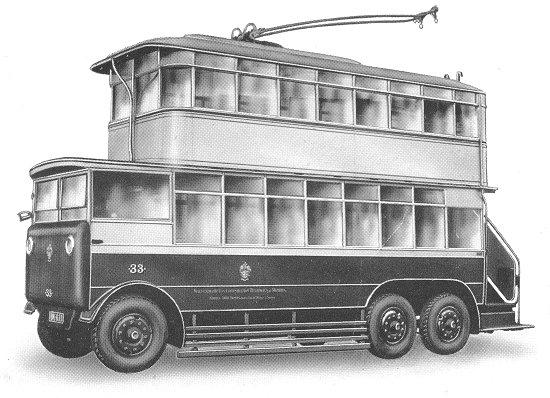
The world's first six-wheeled pneumatic-tyred
trolley bus. |
By 1925 it was obvious that larger capacity buses were
becoming a necessity because of the growing population of towns.
As a result, Guy Motors developed a 6-wheeled version of the
dropped-frame chassis, which
led to
the introduction
of Europe’s first 6-wheeled double decker
buses, and the world's first 6-wheeled trolley buses in 1926, both of which
were supplied to Wolverhampton Corporation. |
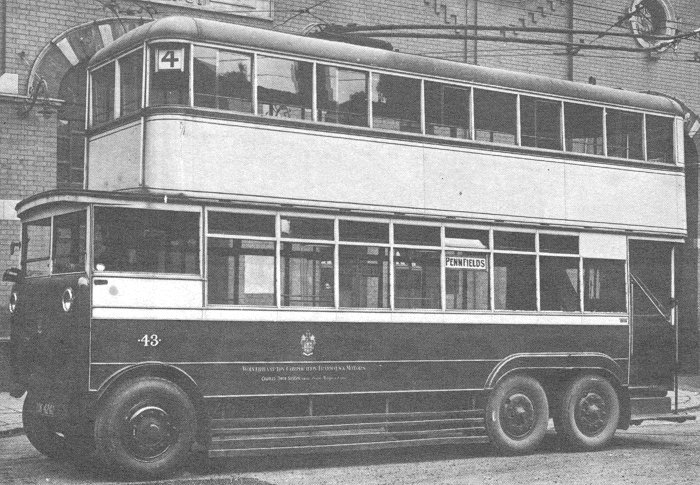
Another of the fifteen 6-wheeled Wolverhampton
Corporation trolley buses that entered service in 1927.
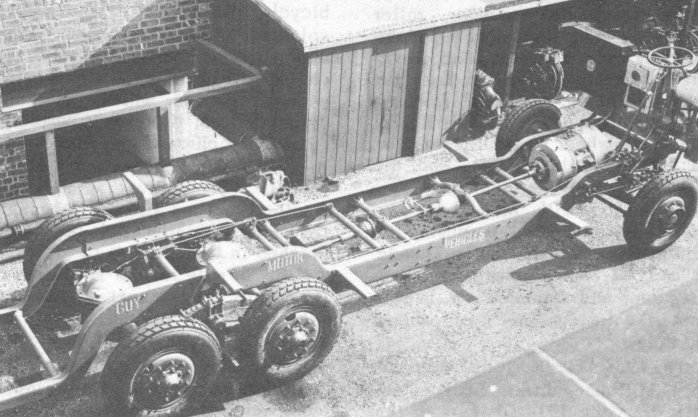
A 6-wheeled trolley bus chassis.
| |
|
| Read about the Guy rigid frame,
six-wheeled chassis |
 |
| |
|
| Read about the Guy OND model |
 |
| |
|
| In 1927 a fleet of Guy 6-wheelers were sold to the London
Public Omnibus Company and appeared on the streets of London.
They were so successful that the bus company was purchased by
the London General Omnibus Company, which later became the
London Transport Executive. |
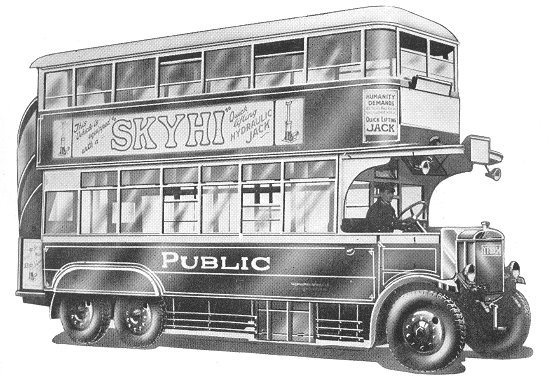
One of the first 6-wheeled buses to be
operated in London. |
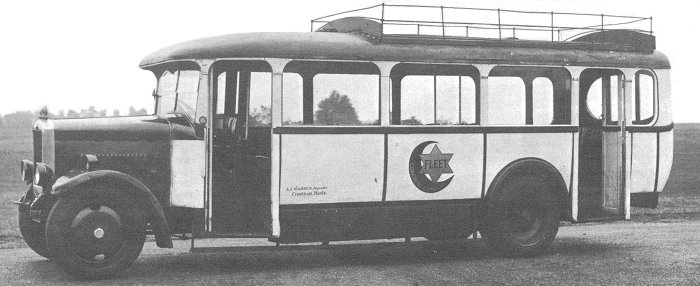
A 1927 Guy BB 31-seater coach run by the Fleet
Coaching Company, Crookham, Hants.
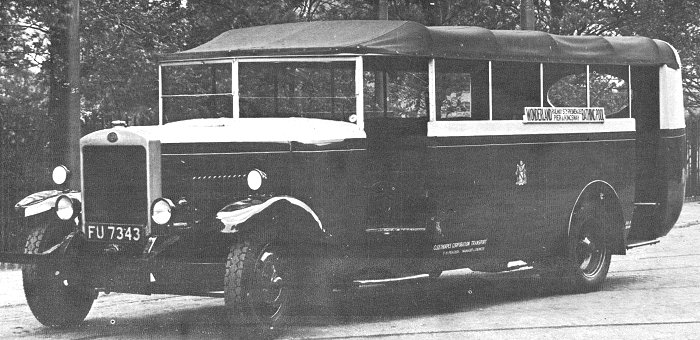
A 1927 B type 21-seater coach operated by
Cleethorpes Corporation.
|
Rapid developments in petrol bus design
hastened the decline of trams. Many towns and cities decided to
invest in trolley buses as a replacement for trams because the
electricity generating capability was already at hand. Trolley
buses offered many advantages. They pulled to the kerb for
loading, were much quieter than trams, more reliable, and
cheaper to run. The Guy trolley buses featured Guy's patented
regenerative braking system, which provided electric braking and
fed power back into the line.
They were the first
of the large number of Guy trolley buses which would be built during the next
36 years, and supplied to operators both in the UK and abroad.. In March, 1927 Jack Bean joined the Board
of Guy Motors. He had previously been Managing Director of Bean
Cars Limited at Tipton. |
|
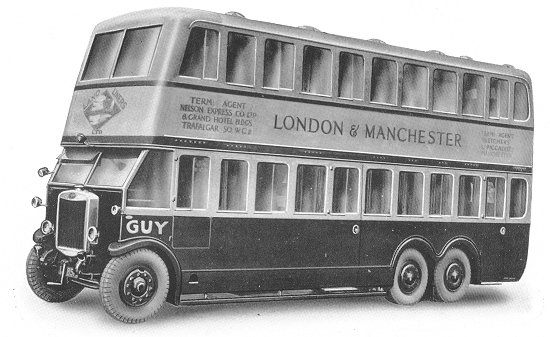
A Guy 6-wheeled double deck long distance
coach. |
In 1928 Guy pioneered the 6-wheeled double
deck sleeper coach, which ran between London and Manchester.
|
| Until the 1940s, armoured cars were usually based on large
touring car chassis. In the mid 1920s Guy developed an
armoured car based on the 6-wheeled commercial vehicle chassis,
to produce a robust, go anywhere design. The vehicle weighed 9 tons, and had a circular blower-type
radiator, and a top speed of 45 mph. In 1928 over 100 of them were supplied to the Indian
government. |
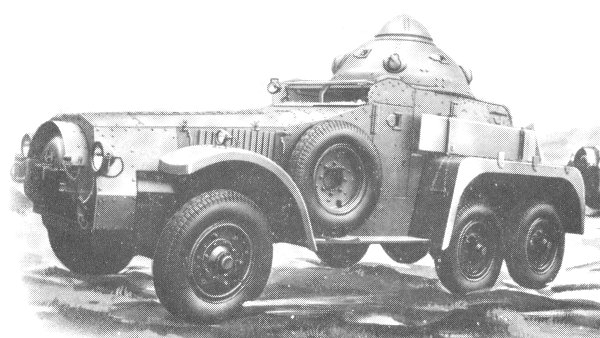
A Guy armoured car.
| By the late 1920s the Star Engineering Company Limited of
Wolverhampton found itself in trouble because of falling sales.
The company produced a small range of commercial vehicles, and
high quality cars. In 1928 with production still falling, Star
found itself in a precarious financial state. As a result Guy
Motors took control through an exchange of shares, though Star
continued in existence as a separate company, now called The
Star Motor Company Limited. In 1927 Star launched a new
commercial vehicle chassis called the 'Flyer' which was
developed from a 20-seater low-loading bus chassis. It was
powered by a 3.2litre 6-cylinder engine, and sold for £645.
|
| When Sydney Guy decided to take the company over, he either
had his eye on the 'Flyer', or wanted to re-enter the high
quality car market.
Most of Star's production took place in a
number of factories in the Frederick Street area of
Wolverhampton.
The company also had a new factory in Showell
Lane, Bushbury, where bodies were built.
In 1929 all of the
factories around Frederick Street were closed, and production
moved to Showell Lane where cars could be built under one roof.
The workforce was reduced to around 250, and Guy dropped some of
Star’s heavier commercial vehicles that were in direct
competition with its own products. |
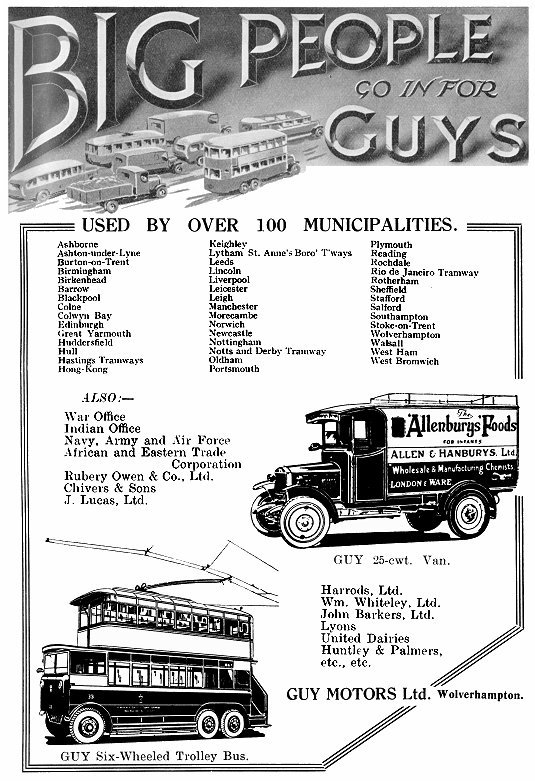
An advert from 1929. |
|
Three cars were available, the 18/50, the 20/60, the
occasional 24/70, all with a range of bodies, and a 1¾
ton version of the 'Flyer' with vacuum brakes. Under Guy,
Star cars retained their quality build and high levels of
workmanship, but they were far too expensive for most people,
particularly in a time of recession. 1930 saw the introduction
of the ‘Comet’, ‘Planet’ and ‘Jason’ series of cars. Around 214
cars were produced that year, the most popular being the
18/50hp. ‘Jason’, selling for £595. Unfortunately a small loss
was made on the sale of every vehicle.

A Star Flyer from 1927, operated by
Holden's, Griffin Street, Netherton.
At the time, Guy Motors was also in financial
difficulties due to the recession, and so couldn't afford to
equip the new Bushbury factory with up-to-date machinery.
Star found itself in a desperate situation, and as a result a
receiver was appointed in March 1932.
Spares and manufacturing rights were obtained by McKenzie and
Denley, of Birmingham, who continued selling spares and
servicing Stars into the 1960s. The Frederick Street works were
sold to James Gibbons (Windows) Limited, and later to Chadd
Castings Limited, who cast aluminium components. The Bushbury
factory was sold to Manley & Regulus, makers of plumbing
fittings, and later acquired by Delta Metals.
The end of the 1920s was a difficult time for Guy. The
company was nearly taken over by the rival lorry and bus
manufacturer, Dennis Brothers Limited, of Guildford, Surrey in
1927. Between
1925 and 1929 profits greatly increased, but during the
recession following the Wall Street crash in October 1929, Guy
shares fell from one pound to just one shilling. Shareholders
lost 95% of their investment in the company, which was caused by
the recession, and the purchase of ailing Star. The company came
close to collapse, and must have deeply
regretted taking over Star. |
 |
|
 |
|
 |
Return to
The
Early Inter-War Years |
|
Return
to the
beginning |
|
Proceed to
Into the 1930s |
|